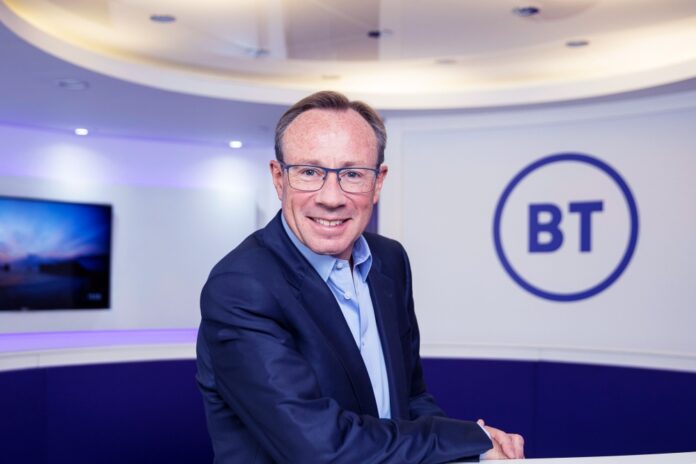But profits rose, CEO Jansen is on his way out and from next year EE will be selling fridges
Outgoing CEO of BT Group, Philip Jansen (pictured), was at pains to point out the strengths of the company he is leaving before Allison Kirkby takes the helm in the New Year. He said, “BT Group has a bright future and I’m pleased to be handing the baton to Allison Kirkby early in the new year. She knows the sector, she knows the company and she’s the right person to lead BT Group from this position of operational strength.”
BT’s share price rose nearly 7%, to 118.8 pence, on the London Stock Exchange after the operator posted its H1 earnings (see here for more details). This is despite the fact that revenues remain more or less flat at £10.4 billion to the six months up to 30 September compared with the corresponding six months last year.
Better news
Adjusted earnings before interest, tax, depreciation and amortisation (EBITDA) are more cheering, though, up by 6% to just short of £4.1 billion. Profit before tax rose by 29% to close to £1.08 billion.
According to Jansen, “These results show that BT Group is delivering and on target…We’ve strengthened our competitive position with the launch of New EE [which will include selling household appliances like fridges from next year, even to those who are not EE customers] and our renewed strategy in Business, and Openreach has now built full fibre broadband to more than a third of the UK’s homes and businesses [12 million properties] with a growing connection rate.”
The jury is remains out on the future of BT Business (created by amalgamating BT Global and BE Enterprise) which has not had the happiest of histories, either at home or on the global stage.
Openreach is the biggest bet
BT’s biggest bet for a bright future is on Openreach, which is investing £12 billion in rapidly expanding its wholesale fibre network. Despite huge progress, there is no escaping the fact that BT started late, preferring to squeeze every bit of value it could from its aged copper last mile. So despite passing 860,000 new premises in the three months to the end of September, for example, the UK remains very much at the lower end of the ranking for fibre penetration in Europe.
The delayed start means that altnet fibre providers have got a headstart building out infrastructure in rural areas and smaller towns.
Although the take-up rate of fibre services is 33%, considerably below the 50% average in Europe according to the FTTH Council Europe. In the longer run, BT didn’t do itself any favours marketing FTTC as ‘fibre’ broadband, which has diluted its customers’ reasons to change to full-fibre. In H1 the FTTP base grew year-on-year by 48% to 2.2 million of which 2.1 million was consumer and 100,000 business.
Losing broadband customers
However, this was tempered by the loss of 129,000 broadband customers in the last quarter, up from 126,000 the quarter before. Furthermore, the operator is expecting a decline of 400,000 customers this financial year, but is braced for bigger losses due to tough financial conditions. Jansen also stressed that losses to rival providers had not increased in the last quarter compared with the one before.
He also said that as Openreach’s infrastructure expands, BT expects will lose fewer customers to rivals and that BT has “broken the back of it”. In fact, BT has passed 12 million premises and its target is 25 million, so it still has a long way to go and in the meantime, its main rival, Virgin Media O2, and the many smaller competitors are not resting on its laurels.
Earlier this year, Jansen was censured by regulator Ofcom for telling the Financial Times that it would “end in tears” for altnets trying to compete with BT. A number of observers saw both statements as attempts to bolster his own position and BT’s share price.
5G and digital transformation
Jansen said, “Our transformation programme has now delivered £2.5bn in annualised savings, well on track to meet our £3bn savings target by FY25.” Whether some of his wilder announcements during his tenure as CEO will happen remain to be seen. In May he promised to cut the workforce by 55,000 by 2030 by leveraging AI and it reaches the end of its fibre build-out.
EE’s 5G base grew 42% year-on-year in H1 to 9.9 million.



